No
picture
name
description
variants
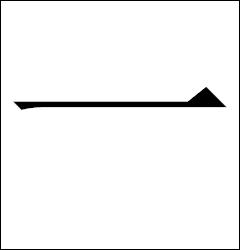
one
may be slightly sloping and moderately sloping, and in general the curve, as in the last example
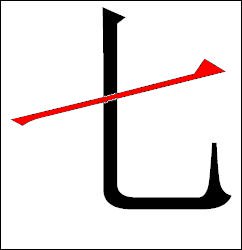
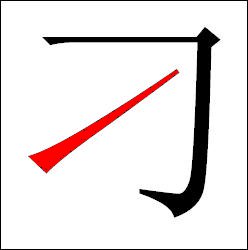

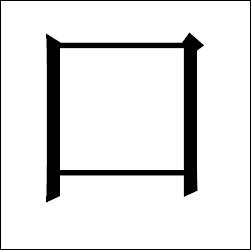
mouth
be careful, not to confuse "mouth" with the "surround" (№ 50). They differ only in size (the only case in hieroglyphics), but in the "mouth" nothing happens, and in the "surround" you can find a lot of things...
3.
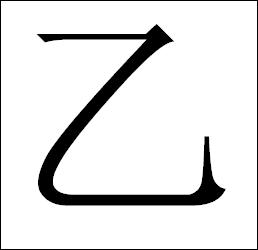
second (cyclical sign of ten)
we will adopt following the tradition that as his variants should be considered: 乛, ㇆, 乚, ⺄ etc.. A few variants, be careful. From simple to sophisticated, as in the last three examples. In the second example there are 2 variants of "second" together .
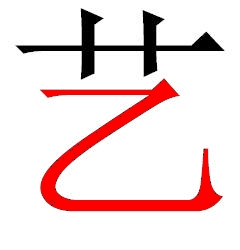
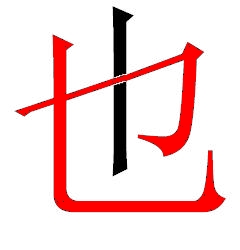
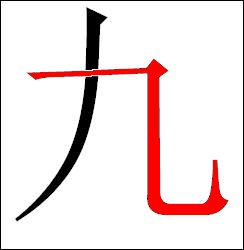
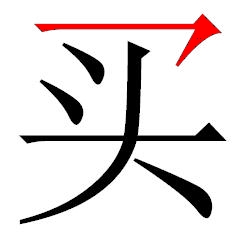
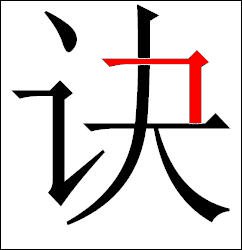
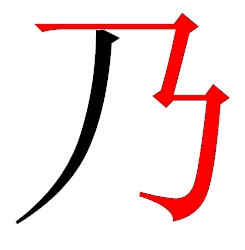

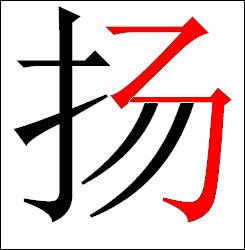
4.
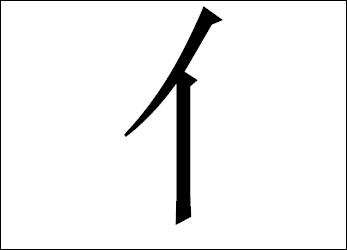
man (on the left)
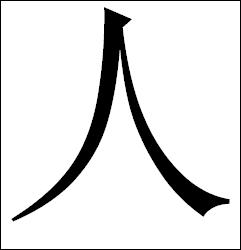
man
The diversity (three variants) of "men" is collected into the "crowd". Note that the standard "falling rightwards" turn effortlessly to the "dot", when necessary, that actually allows us to incorporate them in the graph № 10 (this "calligraphic trick" we will meet again and again).
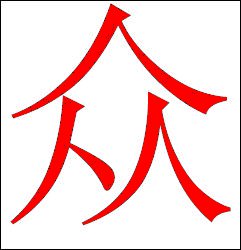
6.
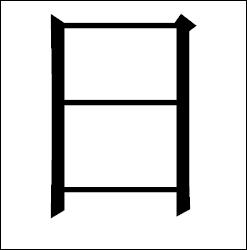
sun
in the examples, two variants of the sun, just to eyes accustomed: one very "stretched", another extremely "elongated"
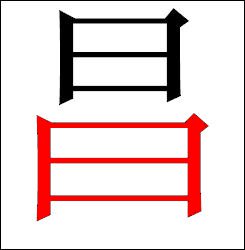
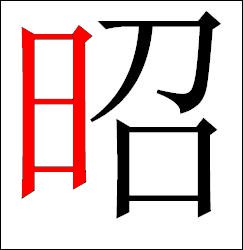
7.
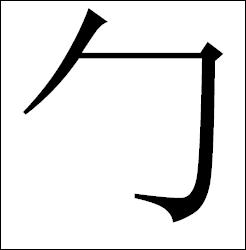
wrap
8.
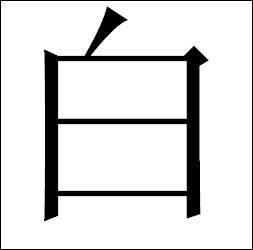
white
9.
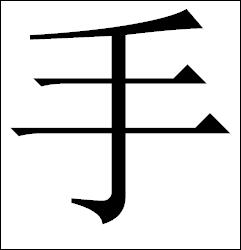
hand
covers all conceivable variants of "classic" hands except "扌" (№ 20). In combination with the "spear" (№ 27) it is not clear who owns the horizontal line. In the second example, meets his variant, in the third pulls up "the finger". Well, in the last example is extremely simplified "hand", which you will always be confused with the combination of "falling leftwards - one" (№ 12 - № 1). Be careful.
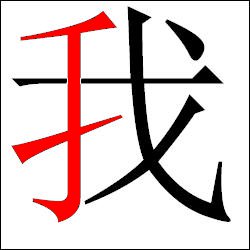
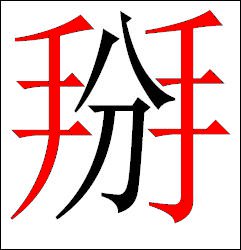
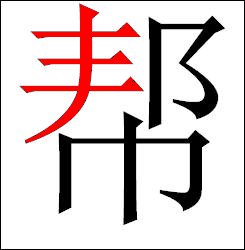
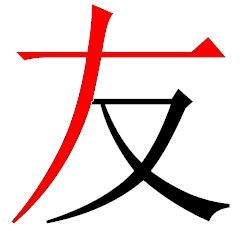
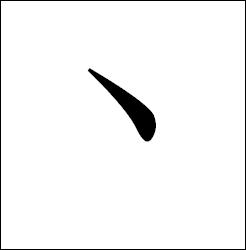
dot
same as "falling rightwards", i.e. the line going from left to right, top to bottom, regardless of its length. Three variants of "dots" on the example of two characters in the next column.
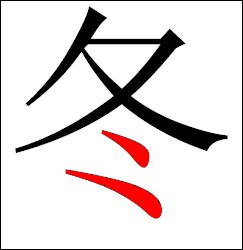
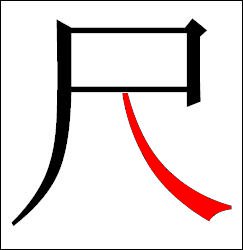
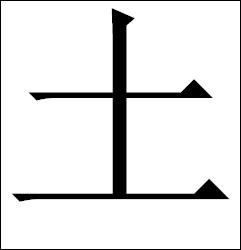
earth
differs from similar "scholar" (№ 102) ratio horizontal lines ("earth" has shorter upper stroke then lower). In straitened circumstances slightly "tilts" the bottom line, as, for example, before "dragon" (a very common calligraphic trick).
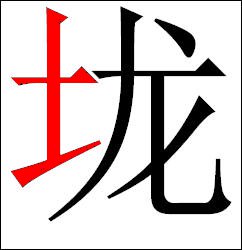
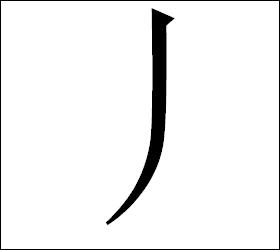
falling leftwards
can "lean" a little bit, being almost vertical, can recline thoroughly as in the first example, and can almost lie down supine, as in the second example. In the third variant is reduced almost to a point, but always retains its direction from top-right to left-down.
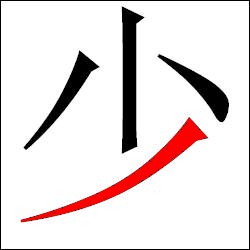
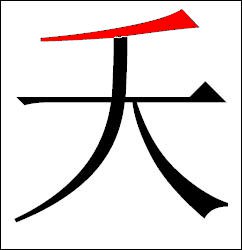
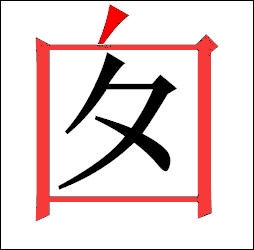
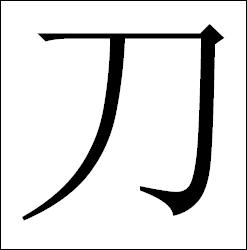
knife
In the first example, the two "knives": almost classic, only slightly compressed by the weight from above, and above it "knife on the side". The second character is really "knife on top". Next two variants of "knife on the side", but they are all "knives" for us.
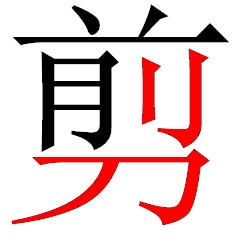
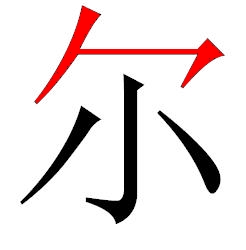
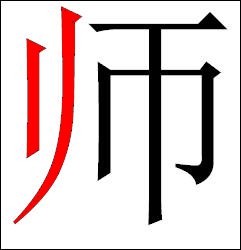
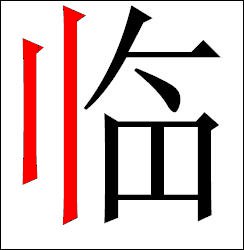
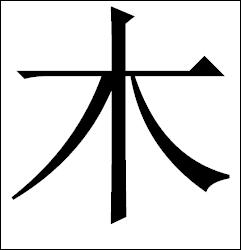
tree
"tapering" of the "tree" by type "man" (№ 5), reducing "falling rightwards" to "dot" (№ 10).
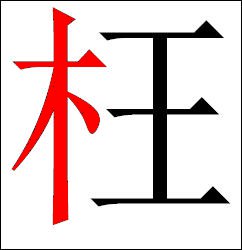
15.
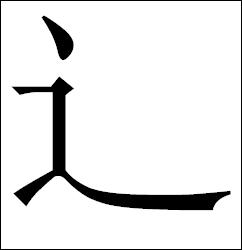
walk
It's almost always located on the left side of the character and underlines it from the bottom, but sometimes "hiding" inside.
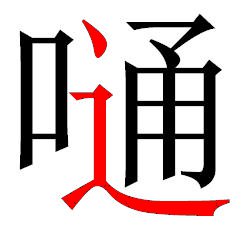
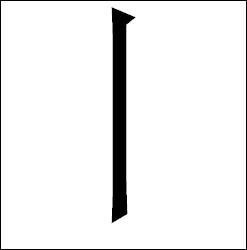
vertical stroke
vary only in length (sorry, height :).
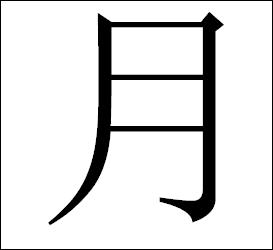
moon
in addition to the "standard" types there are 2 variants, but always recognizable.
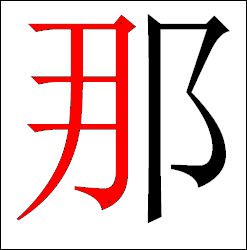
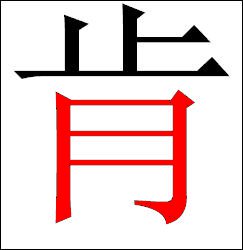
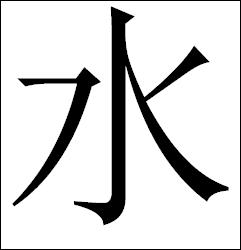
water
in version of the classic "water" is slightly changed middle hook. In the following example 2 "water": "water on the left and frequent variant "water" when it is "closely". And a unique case, when the water is "covering" sign and incorporates 3 horizontal line (an example of "neglect" tradition, which believes that the radical is "hand" here).
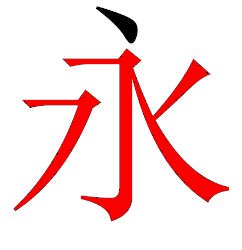
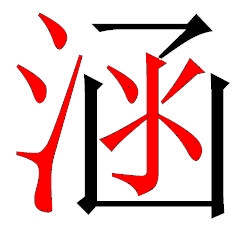
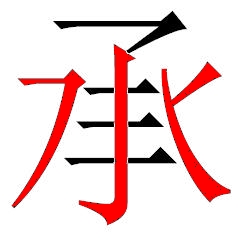
19.
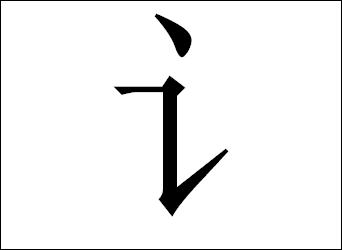
say (abbr.)
"full version " of radical (occurs much less frequently).
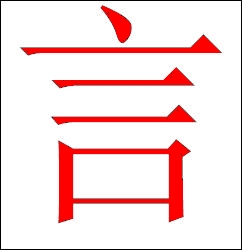
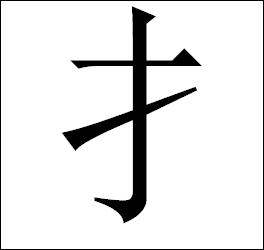
hand (var.)
easily recognizable sign, variations only in height.
21.

two
encodes all the paired horizontal lines.
22.
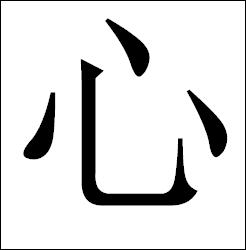
heart
slightly flattened when it's located at the bottom. Habitual and frequent version of "heart on the left" (example 3) and quite rare in the last example.
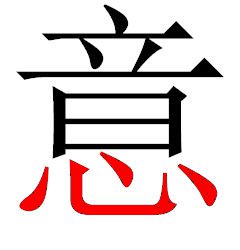
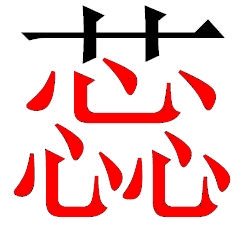
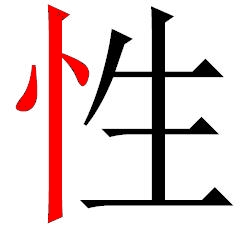
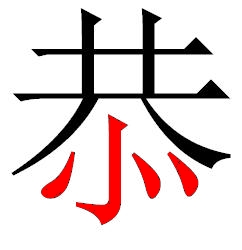
23.
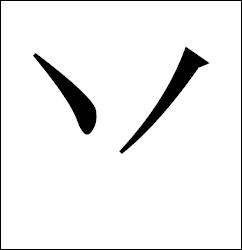
antennae
is not necessarily at the top, may be lower, but then he "covers" some graph. Never found at the very bottom.
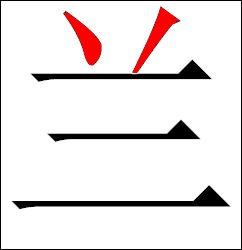
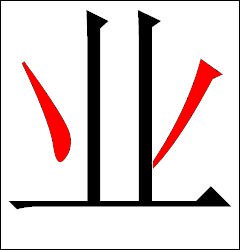
24.
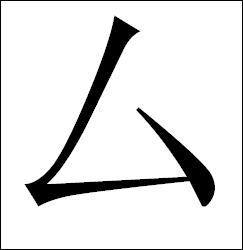
private
25.
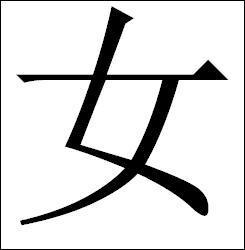
woman
26.
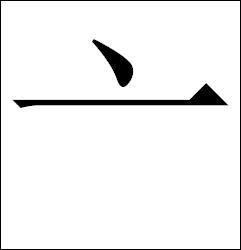
top
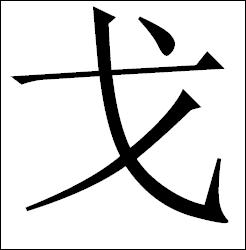
spear
"reduced" version of the spear, in the tradition known as the radical "to hunt".
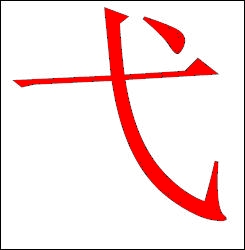
28.
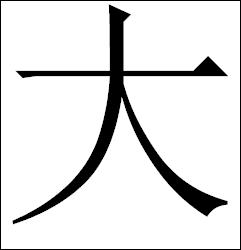
big
several variants of the "big" quite recognizable and caused only by changes in the height or width of the sign.
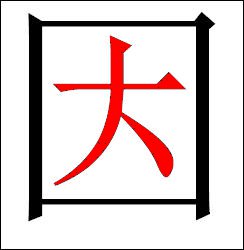
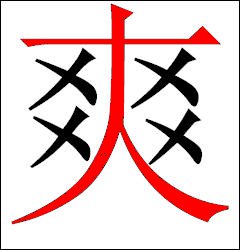
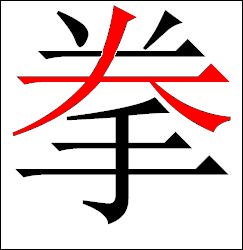
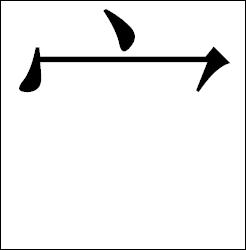
roof
30.
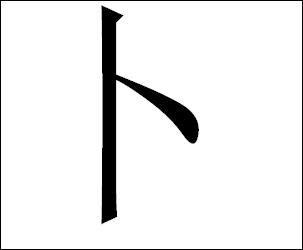
foretell
two variants of "foretell" in one character.
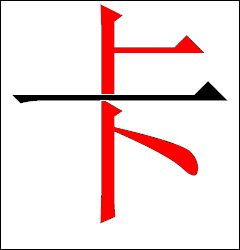
31.
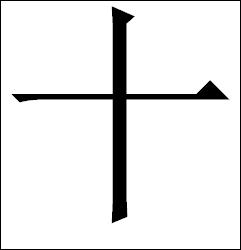
ten
32.
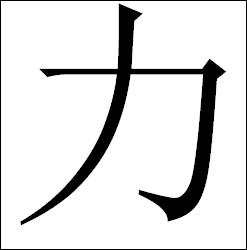
strength
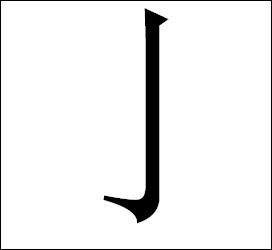
hook
34.
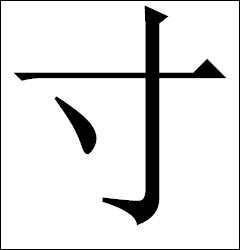
inch
35.
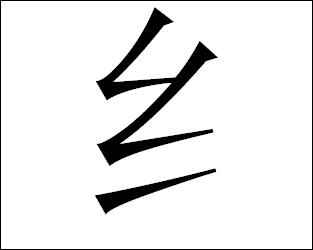
thread (abbr.)
sometimes you can meet variant which probably has slipped through "reform of simplify".

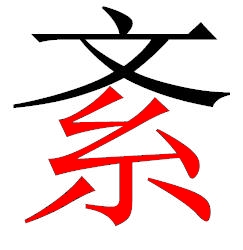
36.
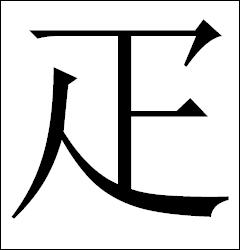
leg
in some cases there is no hook on its upper horizontal
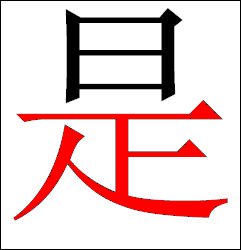
37.
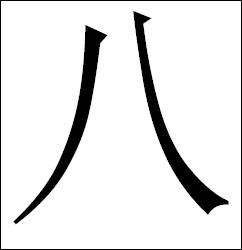
eight
sometimes skips inside itself another "objects" or able to "cover" the other graphs as in the last two examples.
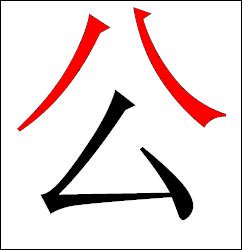
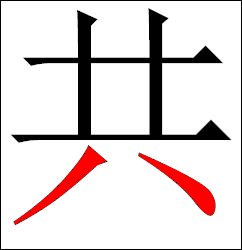
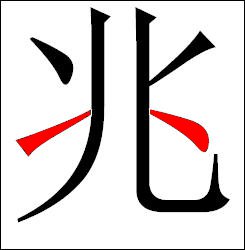
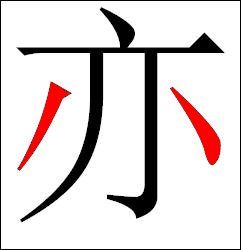
38.
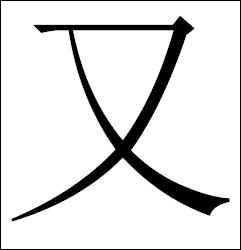
again
two variants, the second is found only in derived from the given character.
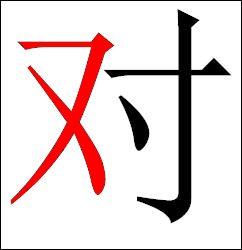
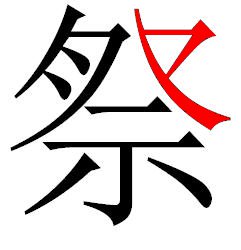
39.
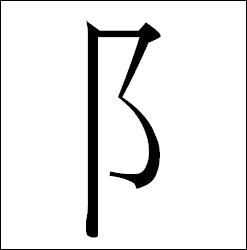
beta
combines traditional "town-mound", because the style they are not distinguishable, and he is located on the left or on the right, is determined by the sequence of graphs in the description of the character, therefore, the separation between "town" and "mound" seems redundant. No variants.
40.
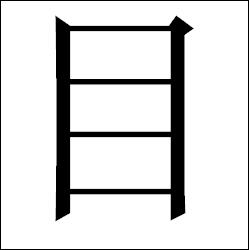
eye
common variant "eyes" with elongated lower horizontal.
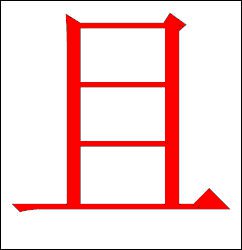
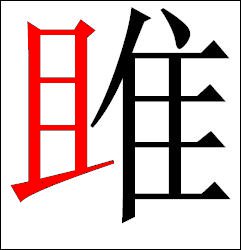
41.
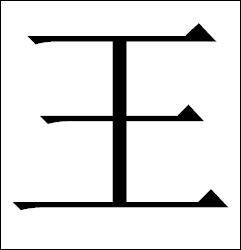
king
predictable variant - it's the expected change of the lower horizontal ("two-in-one" in the example)
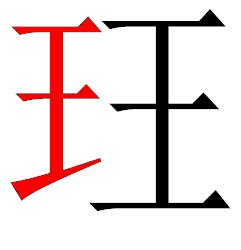
42.
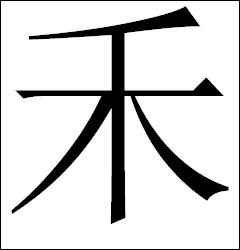
grain
variant formed by the same type as that of the "tree" (№ 14) and of the "man" (№ 5) - reduction of falling rightwards stroke.
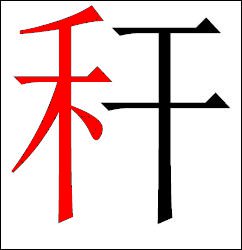
43.
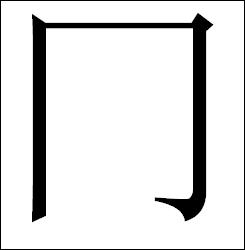
down box
one of the "covering" graphs, inside of which is never empty, except for one character in combination with the "surround" (№ 50). Four variants are shown.
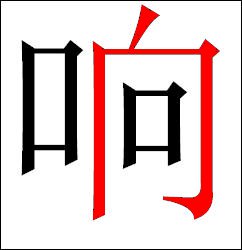
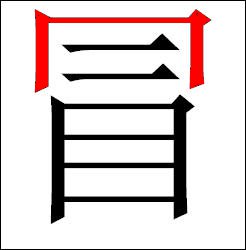
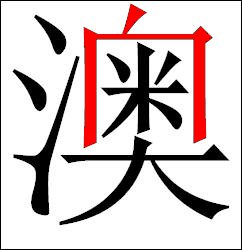
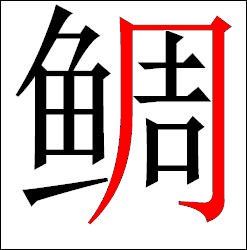
44.
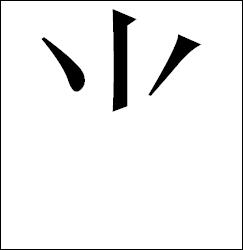
topknot
tradition regards it as a variant of "small" (№ 61), but it seems easier to consider it as a separate graph with two variants.
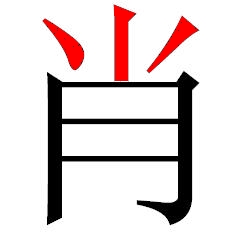
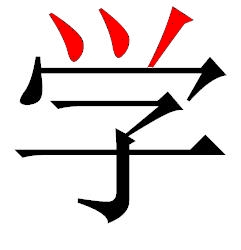
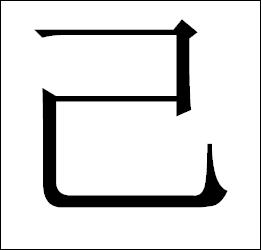
self
of the three variants, the second one is "dangerous" because of its resemblance to the variant "seal" (№ 88).
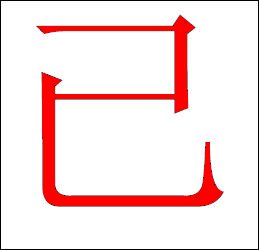
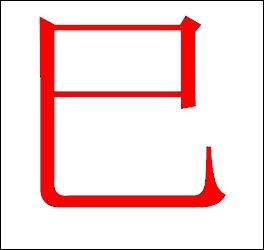
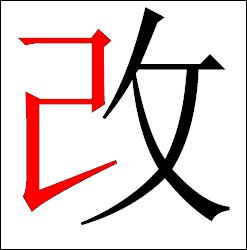
46.
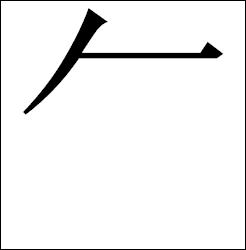
visor
in the traditional set there is no such thing, but sometimes it greatly simplifies the description.
47.
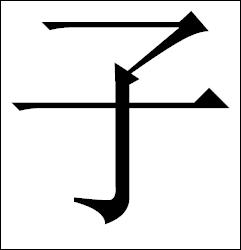
son
a slightly modified horizontal alternate forms of this graph
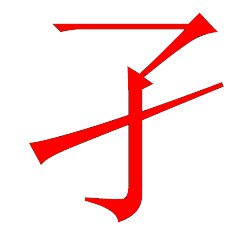
48.
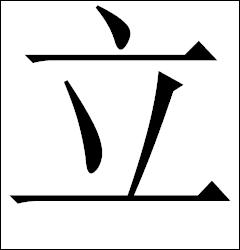
stand
when it located on the "side" (№ 73) and on the "turban" (№ 84), apparently, for more stability, based not on the "one" (№ 1), but on the "cover" (№ 94)
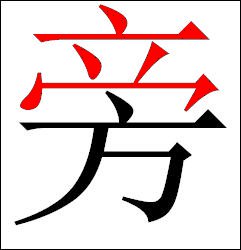
49.
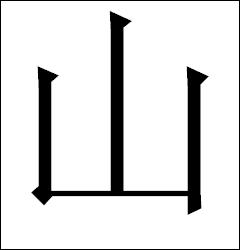
mount-
ain
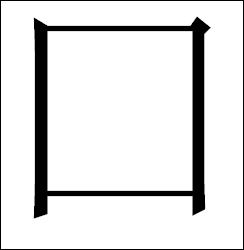
surround
compare with "mouth" (№ 2). If the inside of the object there is something, so it's not "mouth", but "surround" (funny first example is the "mouth" in the "surround") Covering graph. It can be empty inside, but rarely (example 2 is interesting combination of two covering graphs "down box" and "surround").
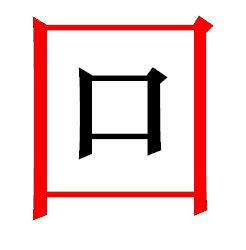
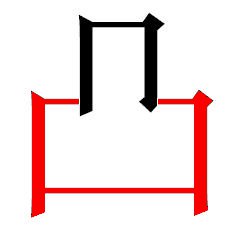
51.
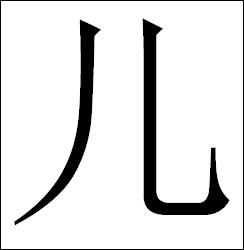
child
pay attention to the third example, in which this graph passes the other graphs inside itself.
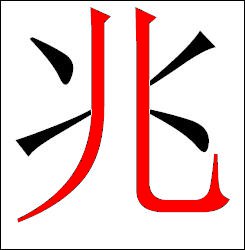
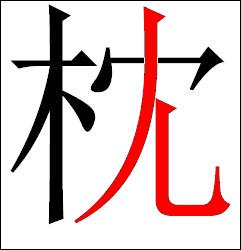
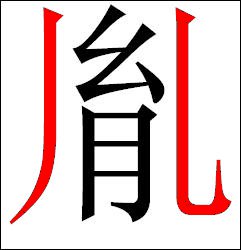
52.
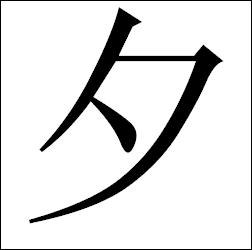
evening
sometimes confused with the "moon" (№ 17) but more like a "meat on left" (№ 128)
53.
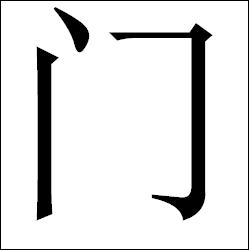
gate
54.
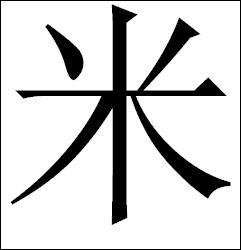
rice
a variant of rice that you will recognize without my prompt.
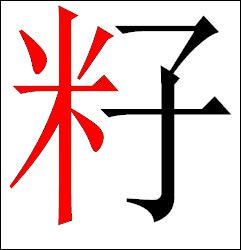
55.
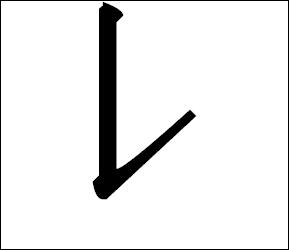
hook-to right
in the traditional set of radicals is missing. In addition to direct correspondence to the image, it encodes also "a lower left corner" right up to right angle .
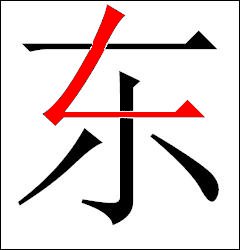
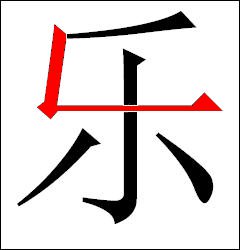
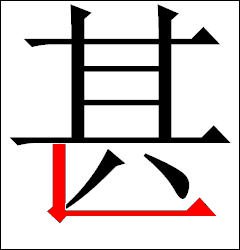
56.
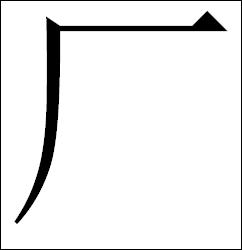
steep
sometimes with a sloped top.
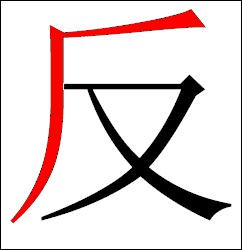
57.
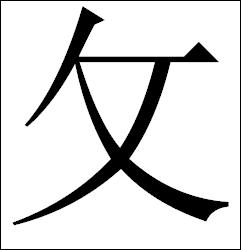
strike (on right side)
be careful, it tends to be confused with "walk slowly" (№ 63).
58.
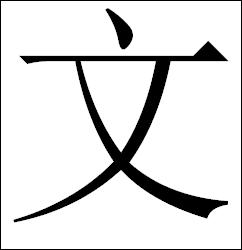
language
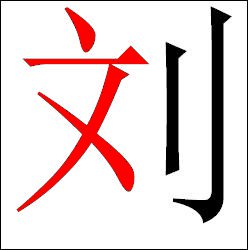
59.
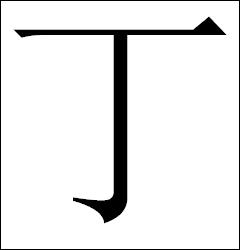
tau
changes only the length of the top horizontal.
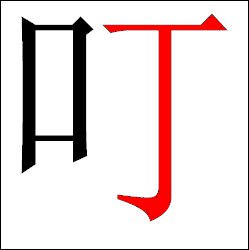
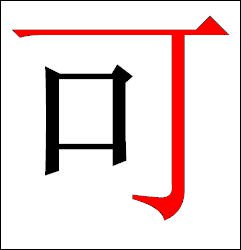
60.
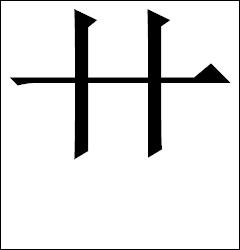
grass (on top)
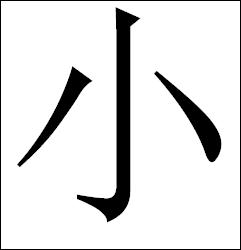
small
occurs only slightly shortened version.
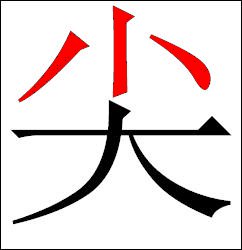
62.
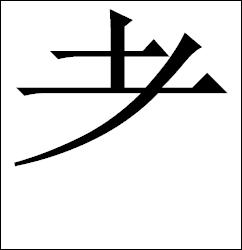
old (abbr.)
tradition views it as variant of "old" (see example). But we will do the opposite, since this variant is encountered incomparably more often than traditional.
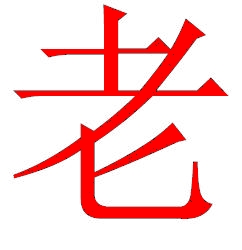
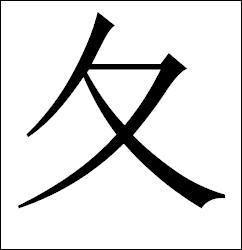
walk slowly
variants are very similar and recognizable. One of them even allows to put a "dot" inside of it.
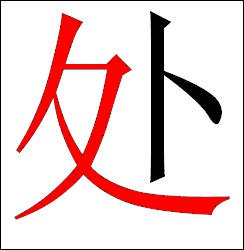
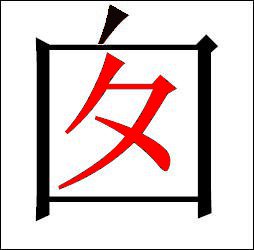
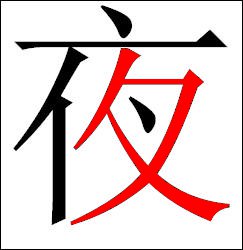
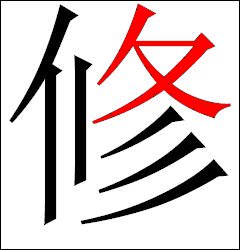
64.
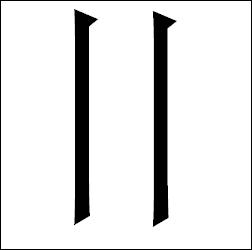
two vertical
in tradition it absent, but very useful because it make our life easier :).
65.
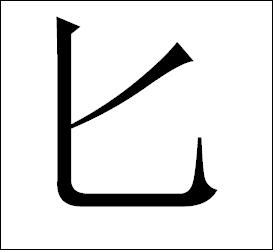
dagger
66.
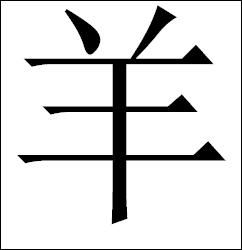
sheep
shortened from the bottom, variant "sheep" loses "leg" (or "tail"?) and sometimes just slightly bent.
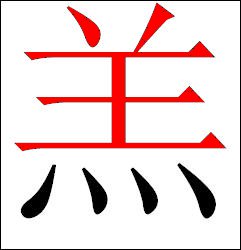
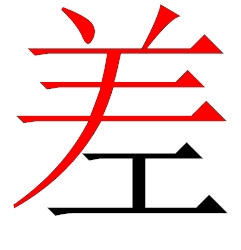
67.
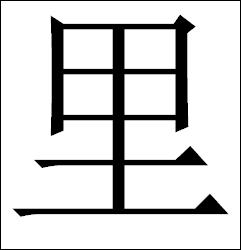
village
68.
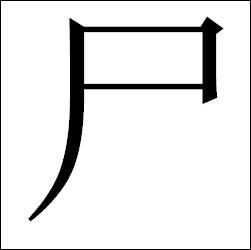
corpse
not to be confused with "door" (№ 110)
69.
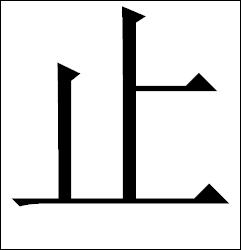
stop
also quite predictable variant.
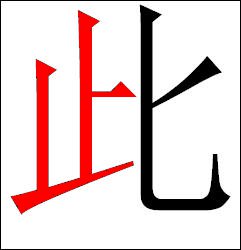
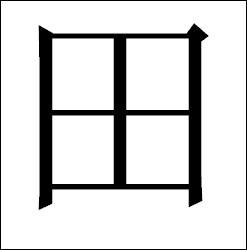
field
71.
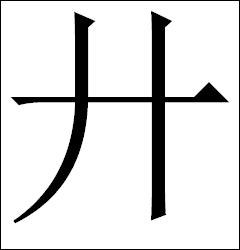
two hands
72.
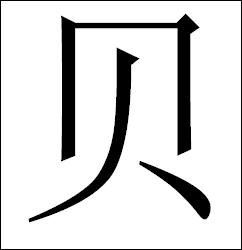
shell
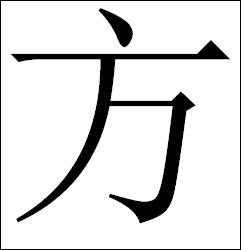
side
located separately (example 1) or merging with other graphs (example 2) sometimes loses the top "dot".
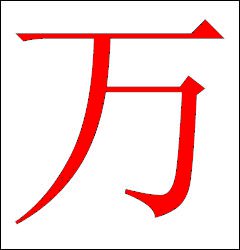
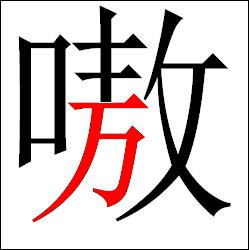
74.
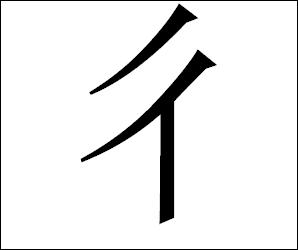
step
75.
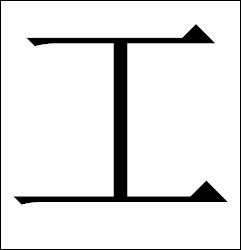
work
predictable variant.
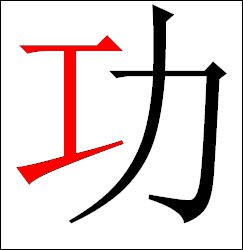
76.
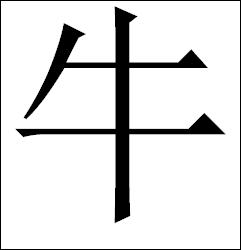
cow
two variants: a "shortened" and "compressed"
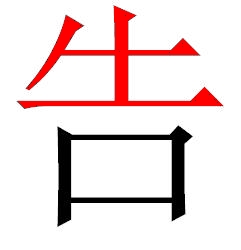
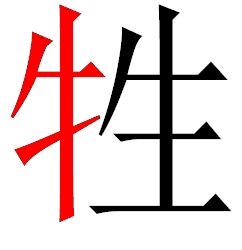
77.
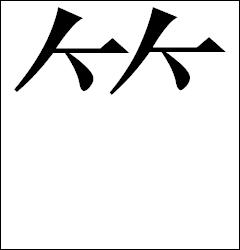
bamboo (on top)
traditional "full" bamboo, it seems, does not occur at all...
78.
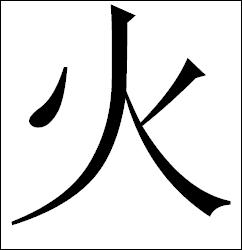
fire
two variants of the same character: the first one is simply compressed laterally and easily recognizable, and the second... well, let us get used to that "the fire from below" also is "the fire"
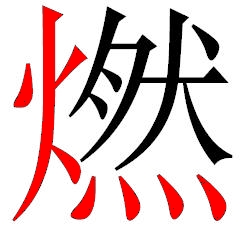
79.
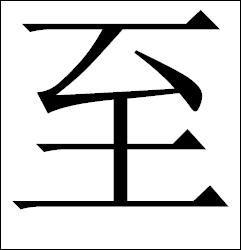
to
80.
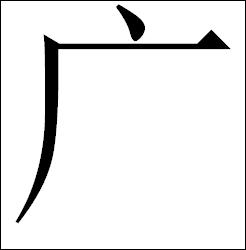
exten- sive
81.
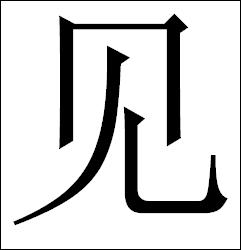
see
82.
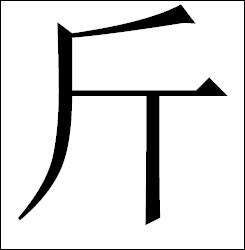
ax
based on "one", change its falling leftwards stroke to vertical stroke
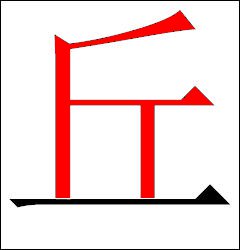
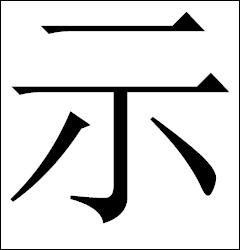
spirit
"spirit on the left" is less similar to its prototype than to variant of clothes (№ 117, clothes on left). Be careful.
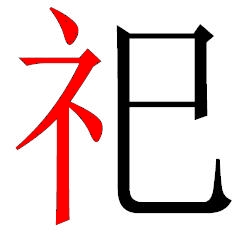
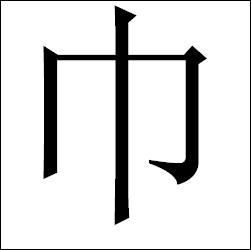
turban
85.
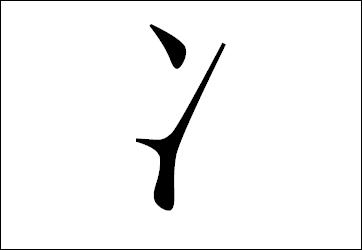
ice
be careful, it's very similar to variant of "water" (№ 18, water on the left).
86.
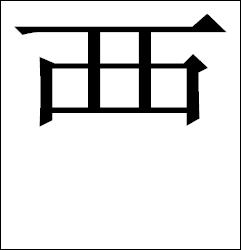
west (on top)
the full (traditional) variant of the "west", as in the example, is less common than abbreviated variant, and it is very similar to "wine" (№ 159). To avoid confusion in matrix an abbreviated variant of this graph is included to it.
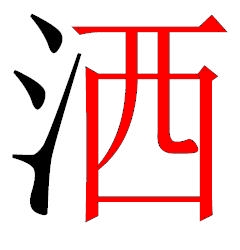
87.
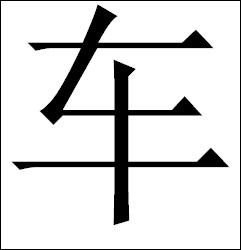
car
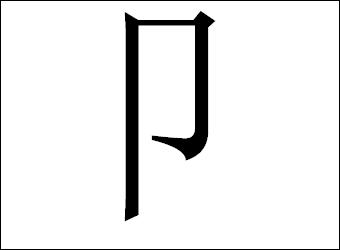
seal
of the three variants of this graphs, the second is "dangerous" because of its similarity with the variant of graph "self" (№ 45).
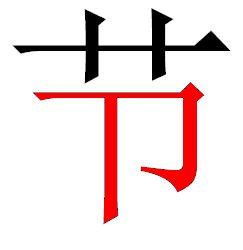


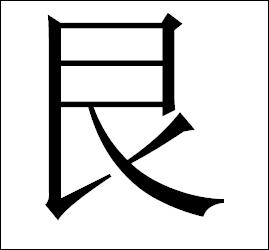
though
two compacted variants.
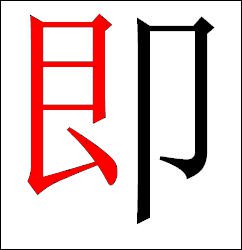
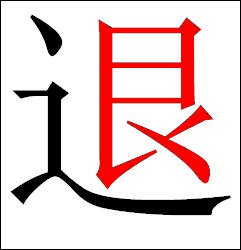
90.
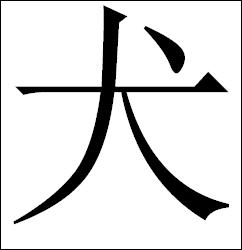
dog
"dog on the left" occurs much more often then its traditional variant.
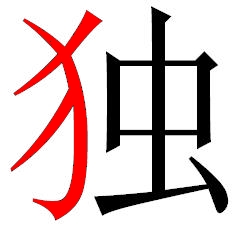
91.
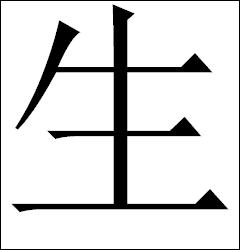
give birth
92.
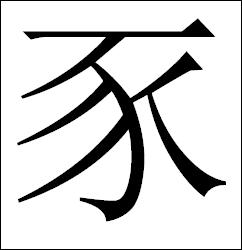
pig
in combination with "knife on top" (№ 13) - "mouth" (№ 2) or after the "pig's nose" (№ 103) loses its top horizontal.
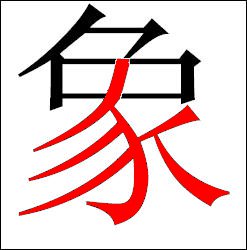
93.
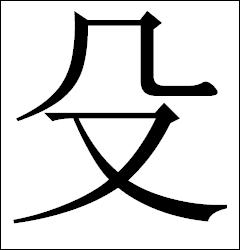
weapon
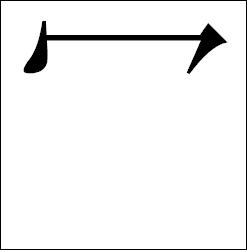
cover
"roof" (№ 29) without "dot" and without variants.
95.
![]()
asterisk - blank graph
the graph modifier, the blank graph, the asterisk ("*" as it appears in the description of the graphs sequence of some characters and in the graph matrix) is a graph which does not have its own "image" but demonstrates the some modification of the graphs sequence.
96.
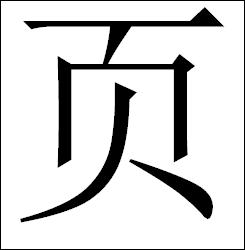
page
97.
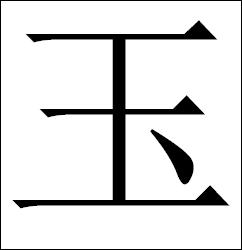
jade
98.
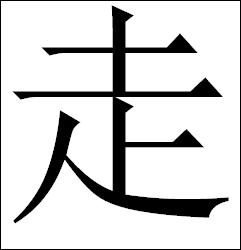
leave
99.

ear
100.
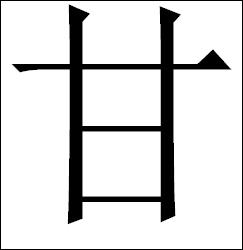
sweet
101.
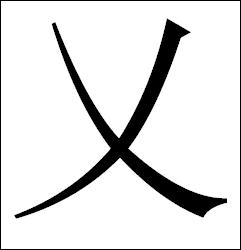
cross
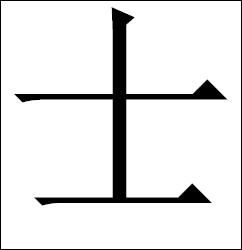
scholar
Chinese "scholar" is different from "earth" (№ 11), except the first elongated horizontal, so that is always right, regardless of the size or tightness. No variants.
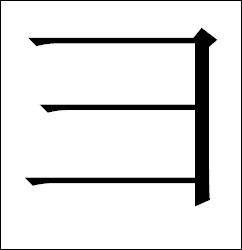
pig's nose (abbr.)
sometimes stretches out the "nose" trying to look like "brush" (№ 141), but never linked with the "vertical stroke" (№ 16) , "hook" (№ 33) and "falling leftwards" (№ 12). Sometimes, as in the second example, pulls the lower horizontal. Full version meets today rarely (example 3).
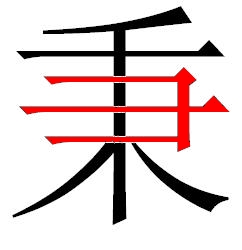
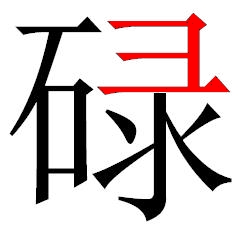
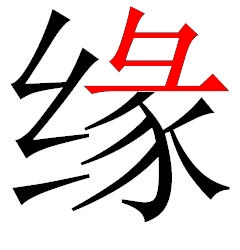
104.
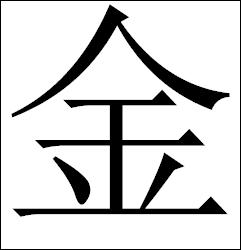
gold
most often used in the abbreviated form "gold on the left" (example 1). In the second example, the curious case of merger "father" (№ 131) and "gold"
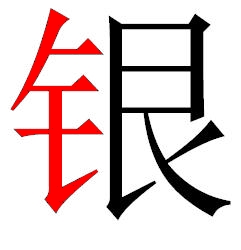
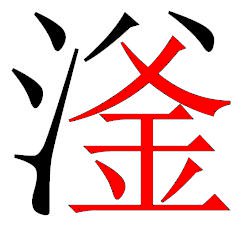
105.
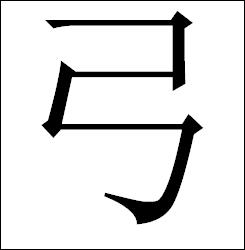
bow
106.
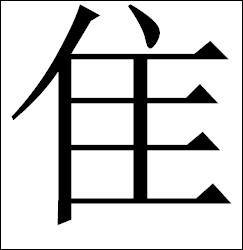
bird without tail
107.
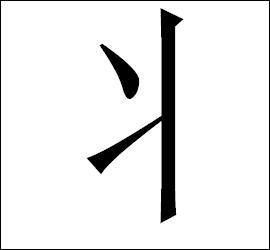
chip
a simplified version of "chips". Sometimes it may be situated on the right and then it looks differently (example 1). Full traditional variant is very rare, with slightly varies (examples 2, 3 and 4).
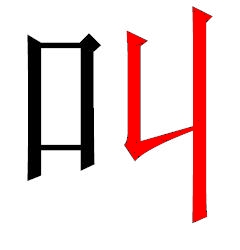
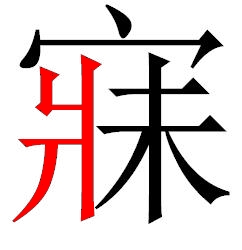
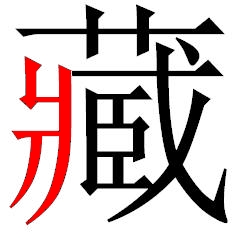
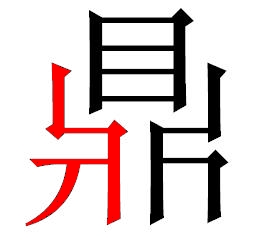
108.
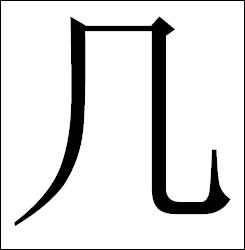
small table
reduced small table "flexes" one its leg
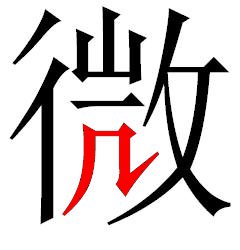
109.
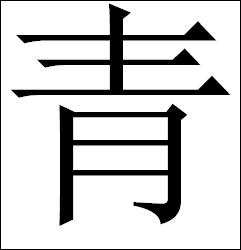
blue
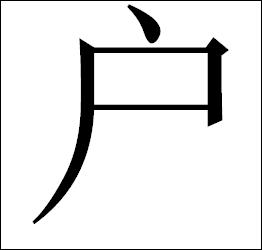
door
the variant is old "door" (the rest of traditional style).
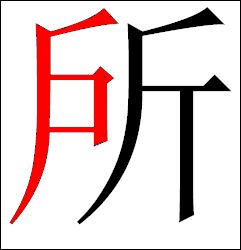
111.
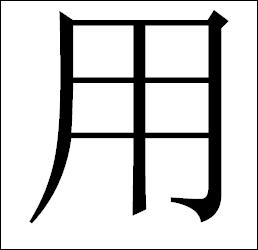
use
sometimes "straightens" the falling leftwards stroke.
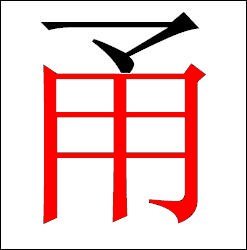
112.
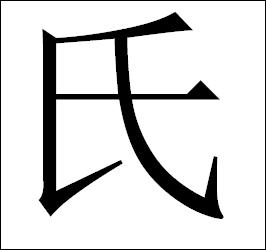
clan
the top falling leftwards can be "masked" by another graph, and the horizontals turn into falling leftwards
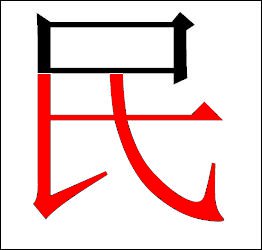
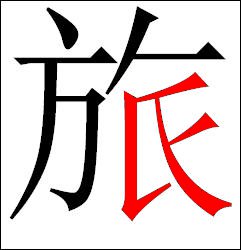
113.
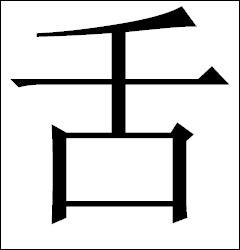
tongue
114.
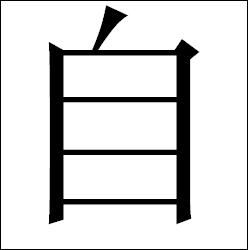
oneself
115.
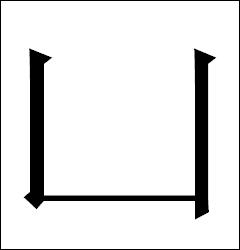
recep- tacle
usually covering graph himself comes inside "surround" (№ 50).
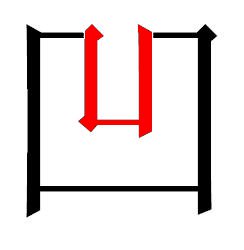
116.
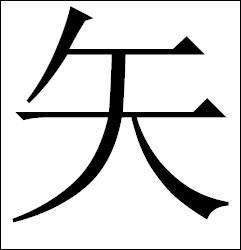
arrow
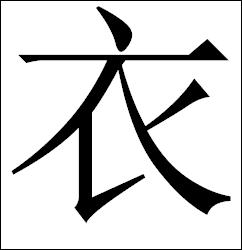
clothes
unexpectedly turned out to be covering graph. Lets place the other graphs under the "hat", and sometimes just loses it as in second example. But more often you may meet the "shortened" version of the "clothes" – the so-called "clothes on the left". Beware, this variant is very similar to the "spirit on the left" (№ 83), added only a small falling leftwards on the right.
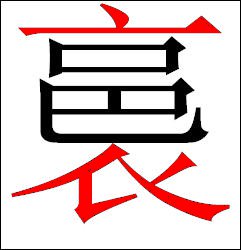
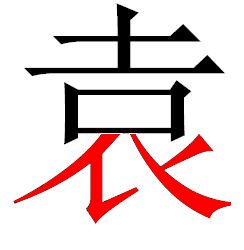
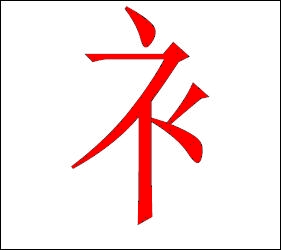
118.
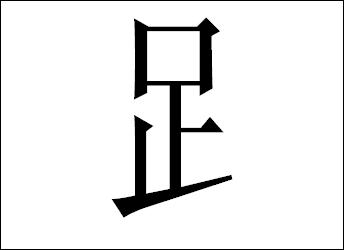
foot (on the left)
the full version of "foot" is quite rare.
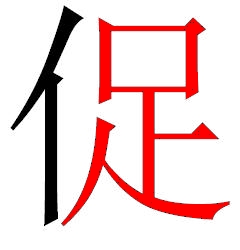
119.
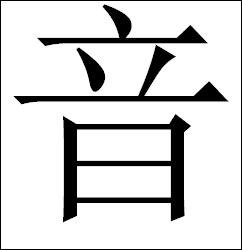
sound
120.
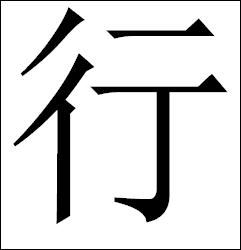
go
covering graph. It may have a lot of things inside it. Be careful when decomposition.
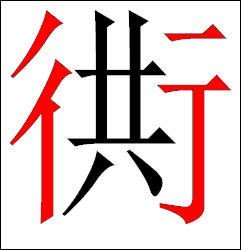
121.
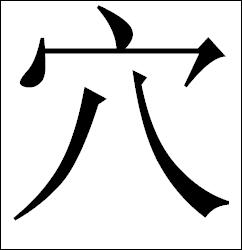
cave
expected modification of the "cave" in the first example and the unexpected loss of the top dot in the second...
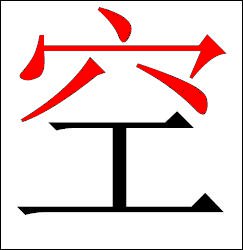
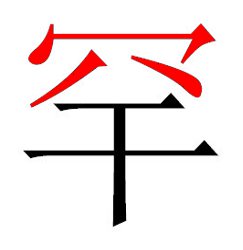
122.
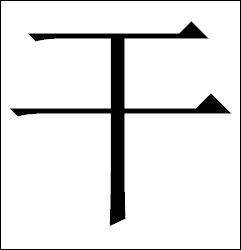
stem
123.
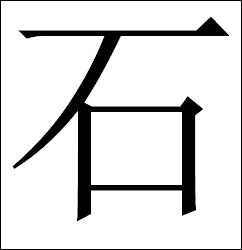
rock
124.
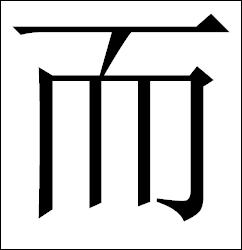
and
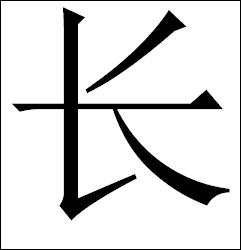
long
126.
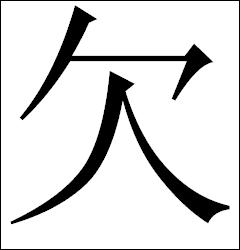
owe
127.
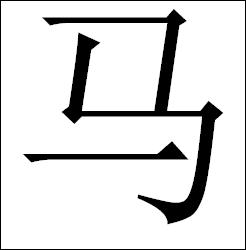
horse
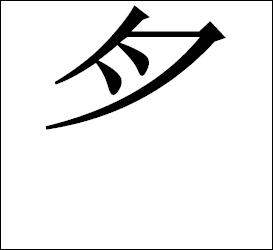
meat (on the left)
very similar to the "moon" (№ 17) and they are often confused, but it is a separate thing, please pay attention to it, I specifically chose a font that draws "meat on the left" by other way than the "moon". The full version of "meat" (see example) occurs much less frequently.
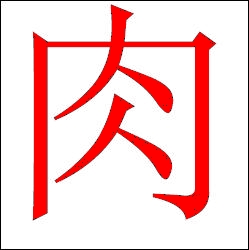
129.
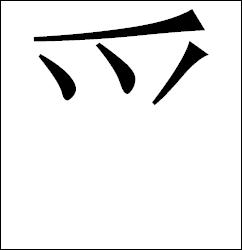
claw (on top)
130.

chief
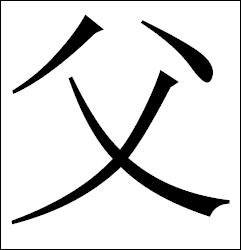
father
132.
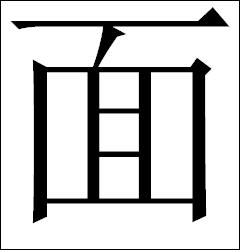
face
133.
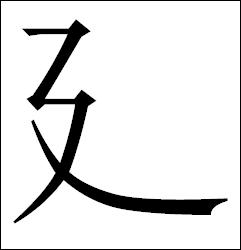
jorney
134.
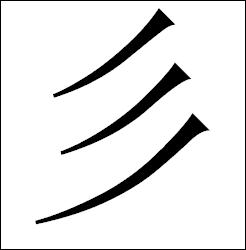
hair
135.
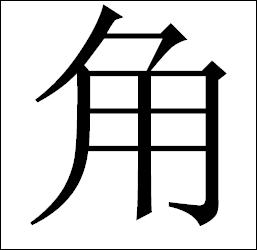
horn
136.
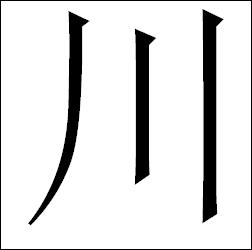
stream
in the first example "stream" flexes his last vertical line. There are another version of "stream" (example 2) and a shortened "version of version" (example 3). And the last reduction to the state of the three verticals.
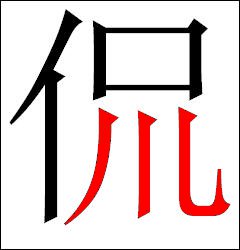
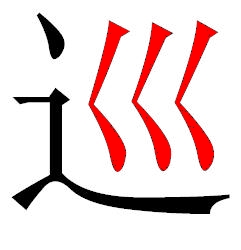
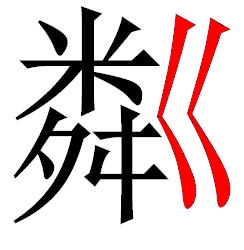
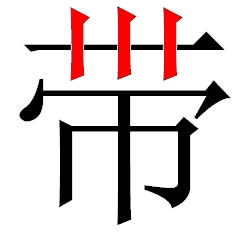
137.
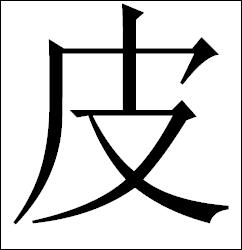
skin
138.
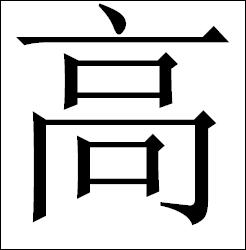
high
139.
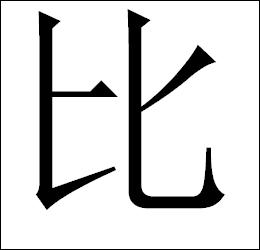
compare
140.
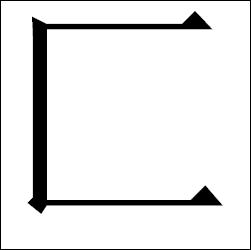
enclose
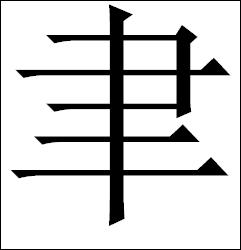
brush
compare with "pig's nose" (№ 103)
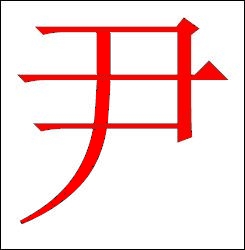
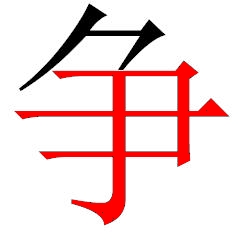
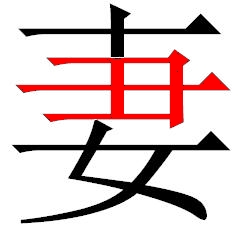
142.
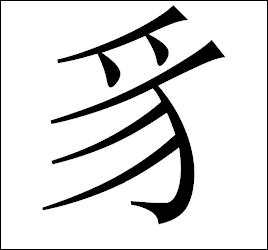
reptile
143.
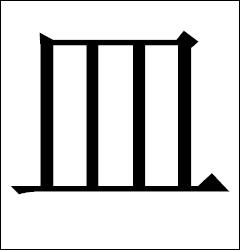
utensil
144.
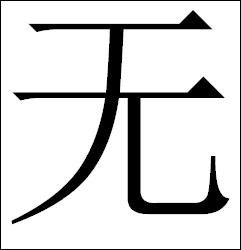
without
the second horizontal line takes a hook on the left when the graph is repeated (compressing the right leg) or is located after the "though" (№ 89)
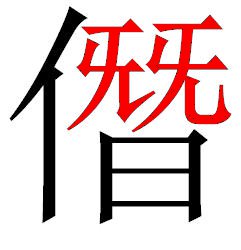
145.
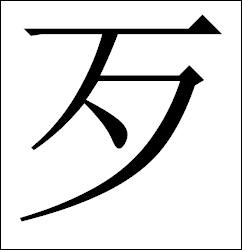
evil
146.
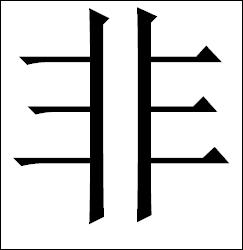
non-
147.
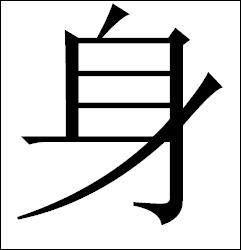
body
148.
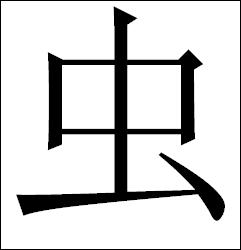
worm
located on the "shell" it loses the right "dot".
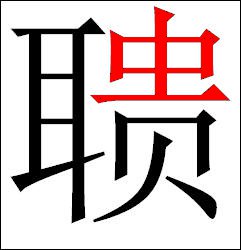
149.
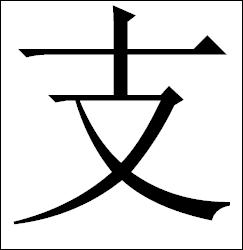
branch
150.
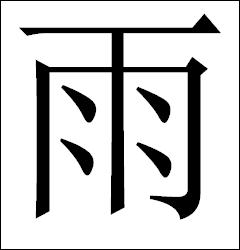
rain
the "flat" version of "rain" is more often than traditional (51:2)
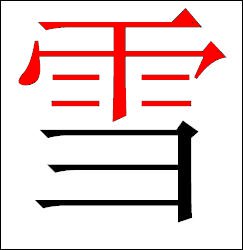
151.

dipper
152.
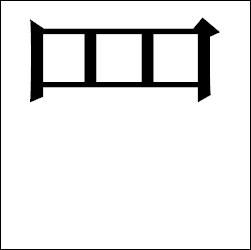
net (abbr.)
rare "full" version of the "net". In combination with other graphs are not noticed.
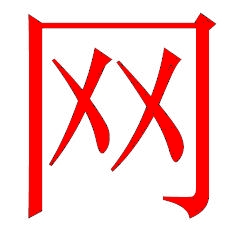
153.
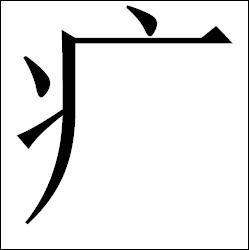
sick
154.
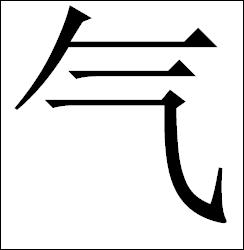
air
155.
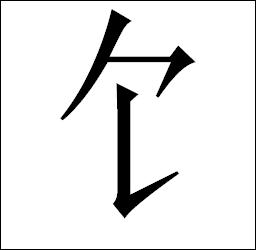
food (on the left)
in seclusion acquires a traditional "classic" look.
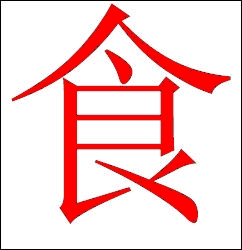
156.
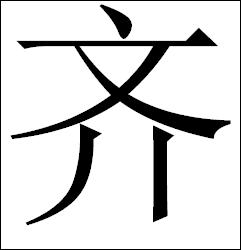
neat
157.
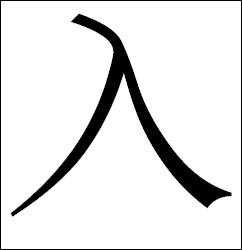
enter
158.
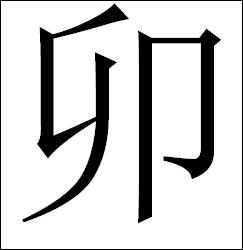
fourth (cyclical sign of 12)
lying on top is compressed, as in the first example. In one case acts as a covering graph, passing inward "though" (№ 89).
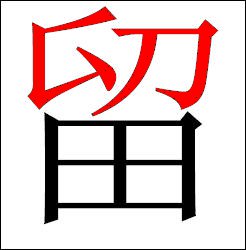
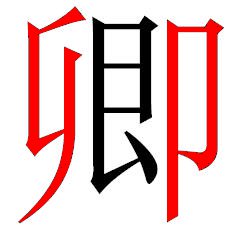
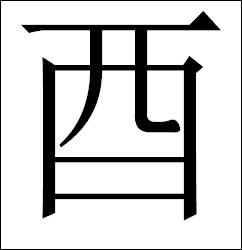
wine
160.
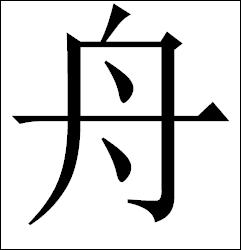
boat
it was discovered only one variant when the "boat" lost the bottom "dot"
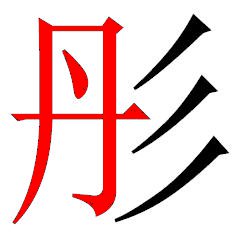
161.

slice
162.
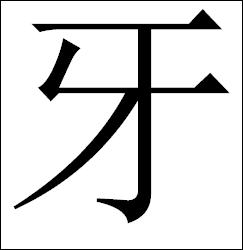
tooth
163.
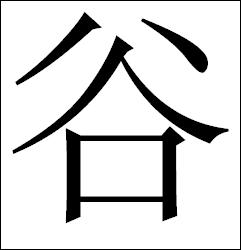
valley
164.
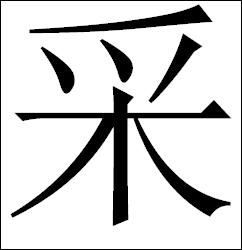
pick
165.
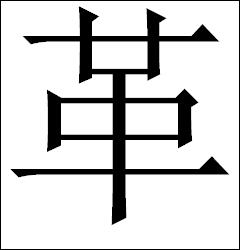
leather
166.
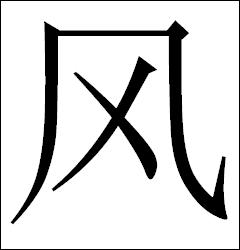
wind
167.
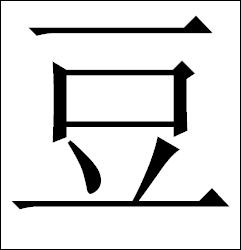
bean
168.
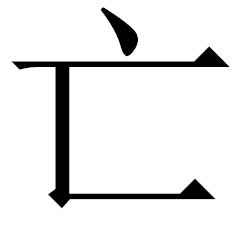
box
169.
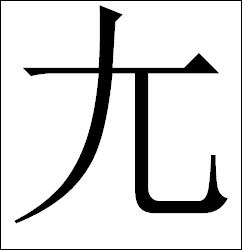
lame
in this embodiment the "lame" has feet clearly different length. Of the 18 characters with graph the lame this variant, when it underlines the next graph, is found three times.
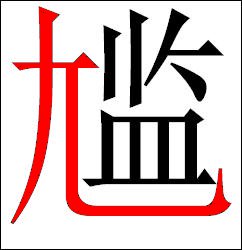
170.
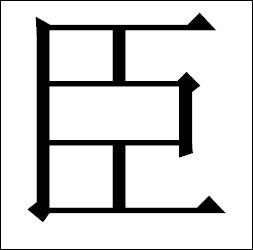
servant
in some cases, loses internal vertical lines.
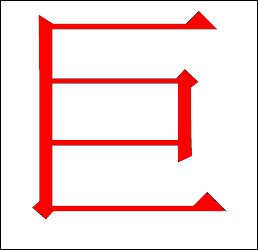
171.
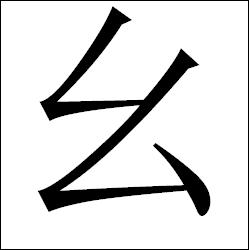
insignificant
in a variant "dot" changes to falling leftwards. This variant, by the way, occurs in texts much more then standard

172.
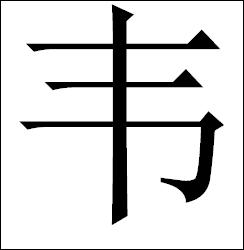
soft leather
173.
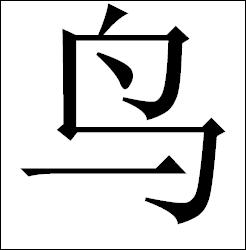
bird
variant without an internal "dot". In graphs sequences referred to as 鸟*.
174.
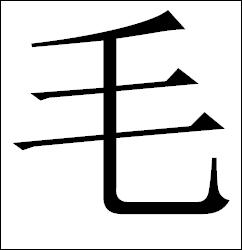
wool
175.
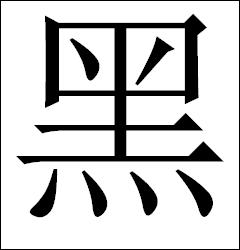
black
176.
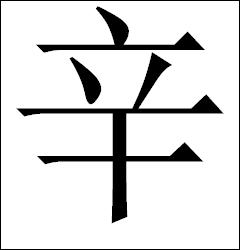
pungent
177.
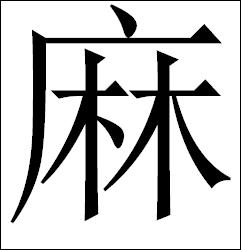
hemp
178.
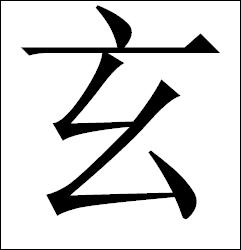
abstruse
179.
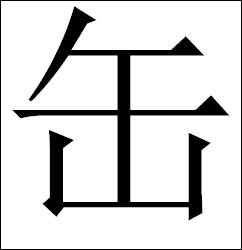
amphora
180.
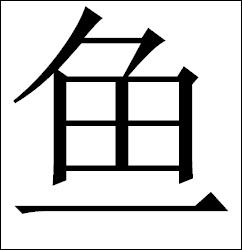
fish
181.
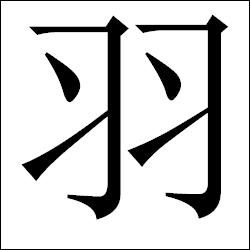
feather
182.
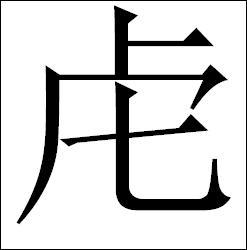
tiger
183.
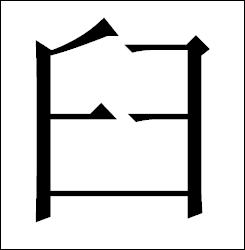
mortar
it often acts as a covering graph, significantly changing in only one variant.
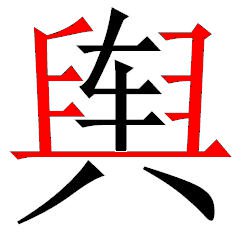
184.
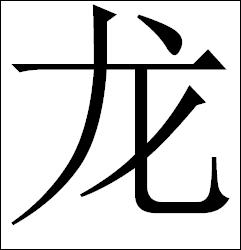
dragon
185.
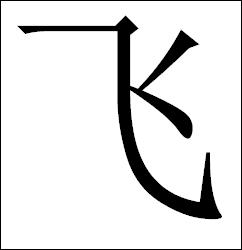
fly
186.
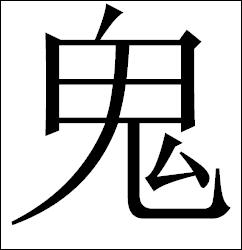
ghost
187.
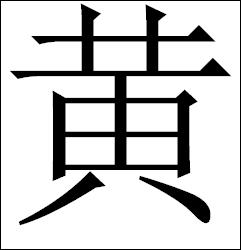
yellow
188.
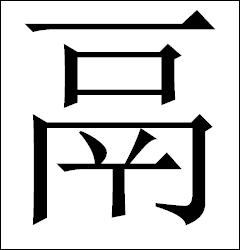
jug
189.
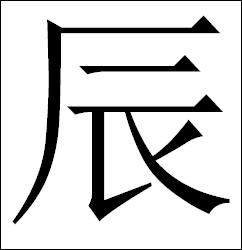
morning
190.
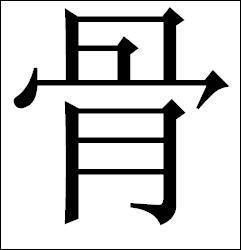
bone
191.
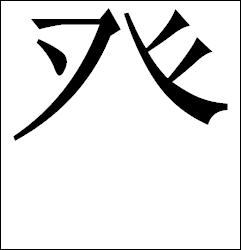
footsteps
192.
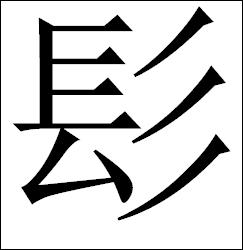
long hair
tradition claims it's "long hair on the head" but in the example it lost "hair".
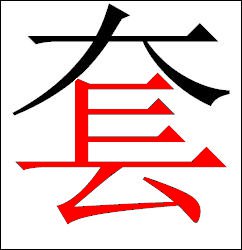
193.
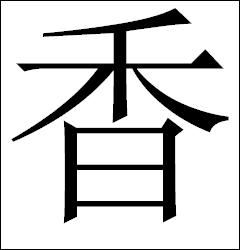
perfume
194.
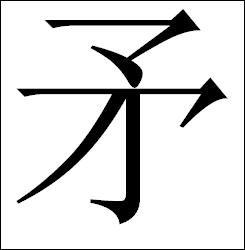
lance
195.
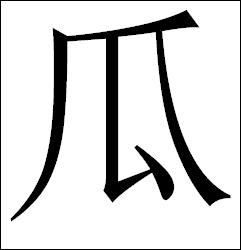
melon
196.
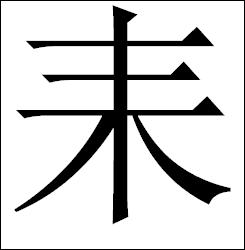
plow
197.
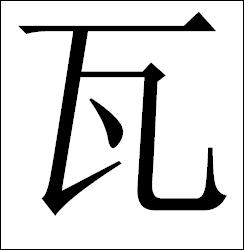
tile
198.
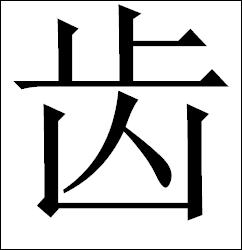
teeth
199.
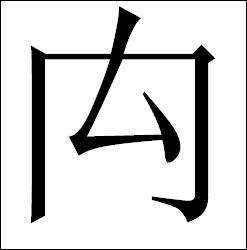
track
changes only in combination with the "field" (№ 70)
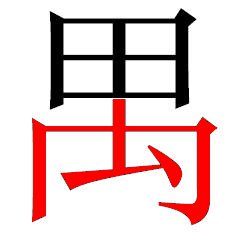
200.

error